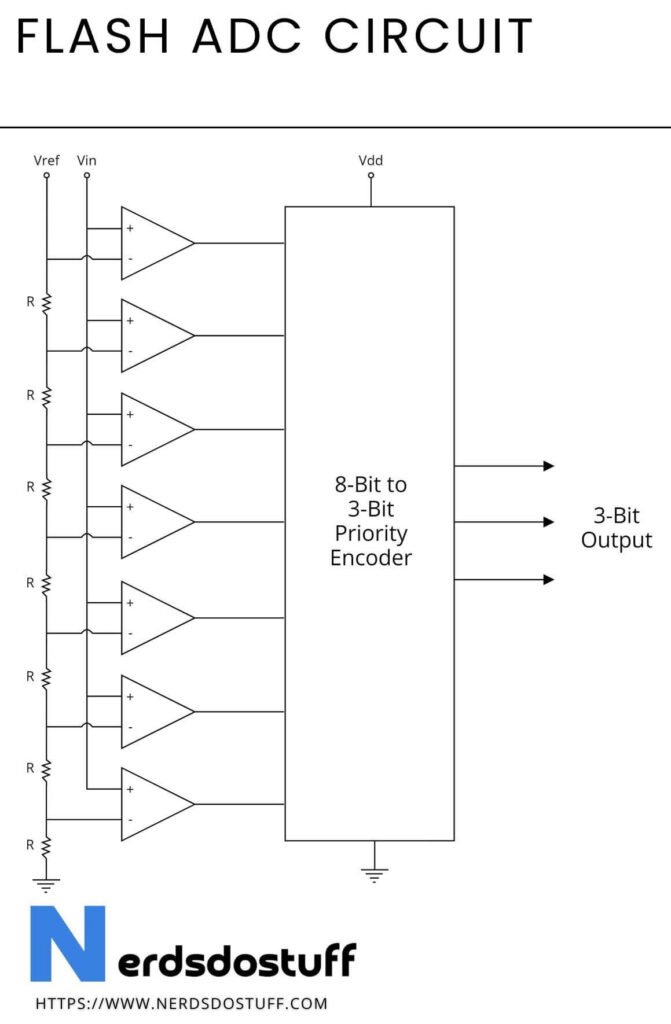What is Flash ADC ?
A flash ADC, also known as a parallel ADC, is a type of analog-to-digital converter that uses a series of comparators to simultaneously compare the input voltage against a set of reference voltages. Each comparator produces a binary output indicating whether the input voltage is above or below its reference voltage. The outputs of the comparators are then processed by a digital encoder, which generates the corresponding digital output code. Flash ADCs are extremely fast, capable of converting an analog signal to a digital output in a single clock cycle, making them ideal for applications requiring high-speed data acquisition, such as digital oscilloscopes, radar systems, and high-speed communication systems. But, they mostly require a large number of comparators for higher resolution, making them more complex and power-hungry compared to other ADC types.
Flash ADC Circuit Diagram

Working of Flash ADC
The operation of a flash ADC involves an array of comparators, each of which compares the input analog voltage to a unique reference voltage derived from a resistor ladder network. This network divides the reference voltage into a series of incremental voltage levels. Each comparator outputs a high or low signal based on whether the input voltage is higher or lower than its respective reference voltage. For an n-bit flash ADC, there are 2𝑛−12n−1 comparators, where each comparator is responsible for one threshold level.
The outputs from the comparators form a thermometer code, a binary sequence where all comparators with reference voltages less than the input voltage output a ‘1’, and those with higher reference voltages output a ‘0’. This thermometer code is then processed by a digital encoder, which converts it into the appropriate binary number corresponding to the input voltage. The entire conversion process occurs almost instantaneously, within a single clock cycle, providing very high-speed conversion rates. This makes flash ADCs exceptionally fast and suitable for high-frequency applications, despite their increased complexity and power consumption due to the large number of comparators required for higher resolutions.
Applications of Flash ADC
- Digital Oscilloscopes:
- Flash ADCs are used in digital oscilloscopes to capture and convert high-frequency analog signals into digital data quickly, allowing for real-time signal analysis and waveform display.
- Radar Systems:
- In radar systems, flash ADCs are employed to process high-speed signals, enabling the detection and tracking of fast-moving objects by converting the reflected analog signals into digital form rapidly.
- High-Speed Data Acquisition:
- Flash ADCs are ideal for high-speed data acquisition systems that require the capture of rapidly changing signals, such as those used in scientific research, industrial monitoring, and automated test equipment.
- Communication Systems:
- Flash ADCs are used in high-speed communication systems, such as satellite communication and optical fiber communication, to convert analog signals to digital form for efficient signal processing and transmission.
- Medical Imaging:
- In medical imaging technologies like MRI and CT scanners, flash ADCs provide the necessary high-speed conversion of analog signals from detectors into digital data for image reconstruction and analysis.
- Electronic Warfare:
- Flash ADCs are utilized in electronic warfare systems for signal intelligence and electronic countermeasures, where rapid and accurate conversion of analog signals is critical for detecting, identifying, and responding to potential threats.




